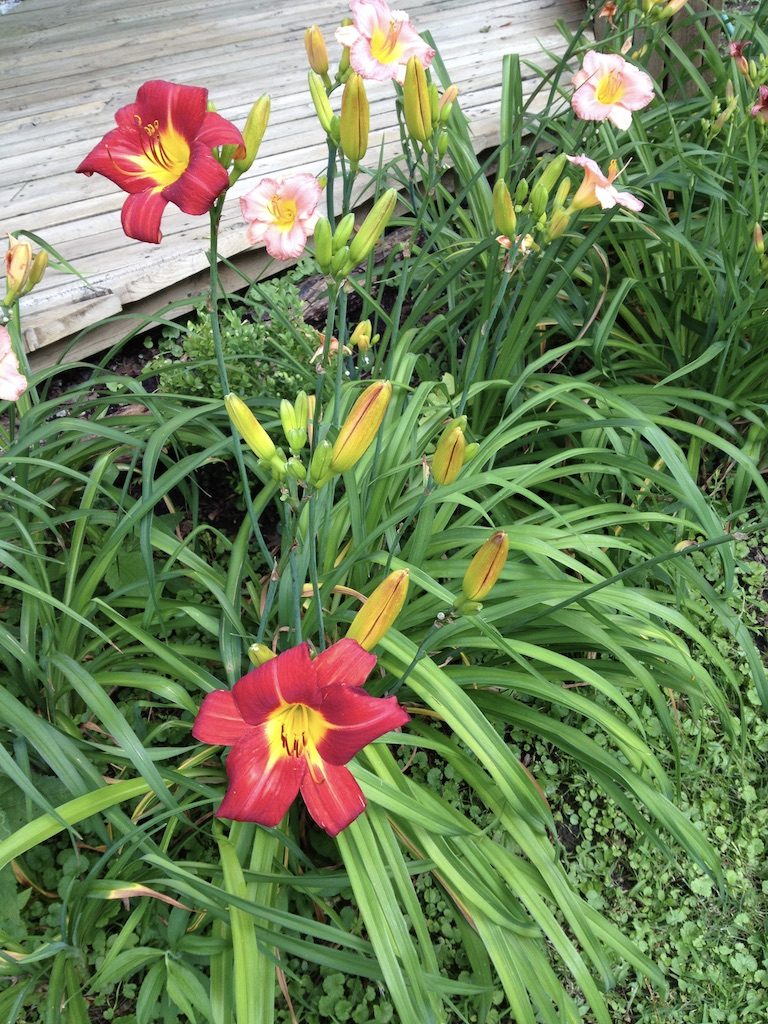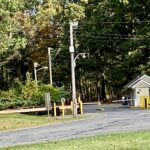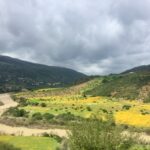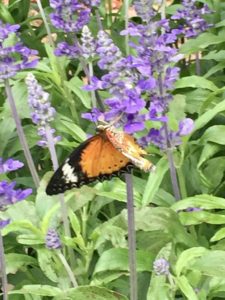 Every year in early spring I see a deep purple spiky plant growing in the yards of others and I want to have it. I don’t know what it’s called or how much care it needs, so this cyclical yearning is left unrewarded. I look out my bedroom window and see that the previous owner once had a garden there. I imagine colorful small clumps of flowers but never get around to planting any. A couple of years ago I had some native grasses, Gooseneck plants and Sedum planted at the entry of my home. This year I think I need to separate them because they have gotten so dense, but it makes me anxious to think of such a maneuver. Then my daffodils come up and all is well again.
Every year in early spring I see a deep purple spiky plant growing in the yards of others and I want to have it. I don’t know what it’s called or how much care it needs, so this cyclical yearning is left unrewarded. I look out my bedroom window and see that the previous owner once had a garden there. I imagine colorful small clumps of flowers but never get around to planting any. A couple of years ago I had some native grasses, Gooseneck plants and Sedum planted at the entry of my home. This year I think I need to separate them because they have gotten so dense, but it makes me anxious to think of such a maneuver. Then my daffodils come up and all is well again.
By the time summer arrives my beds are filled with knee-high weeds. My impulse plant shopping has created a chaos of color, height, and texture. I don’t want to spend any more time mulching. I need help. But I’m not looking for an expensive, long-term project or an award-winning display. I want a garden that doesn’t stress me out or demand too much of my time. There are all sorts of names for gardens and the plants who live there, but I just want the good enough garden.
This kind of garden is low-maintenance, colorful with lasting blooms and in harmony with the existing landscape. Such a pursuit may seem frivolous to some, but not to others. From a practical standpoint, any realtor will agree that flowers make a difference. A nicely landscaped house presents well to would-be buyers. Neighbors enjoy gardens and so do butterflies, bees, birds, and dragonflies.
Gardens can be good for the environment and for your spirit. In my community a civic call goes out for us to be good stewards of the land. Studies find that gardening is one of the best physical activities for preventing or improving chronic health conditions. Gardening helps bones, heart and mind. Before my ambition wanes, I do some research on how anyone might create the good-enough garden in their own backyard.
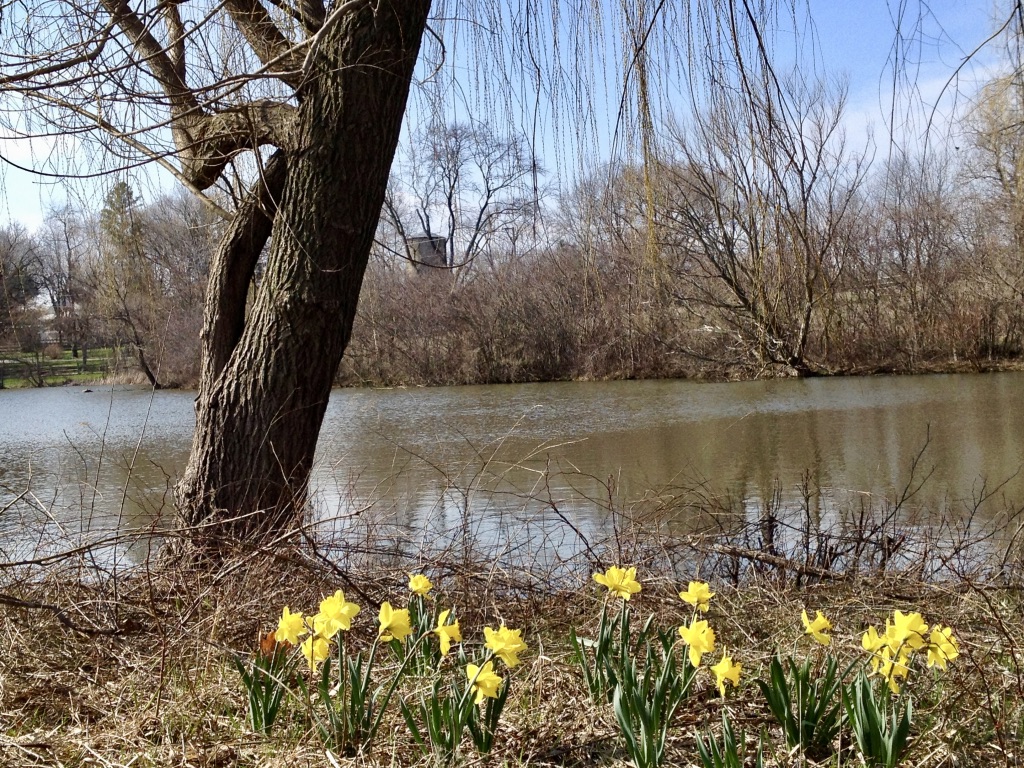
My salute to William Wadsworth’s poem, The Daffodils, “…Beside the lake, beneath the trees, Fluttering and dancing in the breeze.”
Seek advice
There are lots of choices on where to begin, but the secret is to keep from being overwhelmed. I could read catalogs, visit web sites, or go to garden club meetings. But I decide to find inspiration by walking through nearby nature areas, talking with a few pros, and visiting some neighborhood gardeners who, rather than putting me to shame, are glad to share their “what works” wisdom.
My friend and former neighbor Dennis begins reading garden catalogs in January. In February he germinates the seeds in his basement lab, puts them in a greenhouse in March and plants them in late May. He runs a business, heads a family and plays bass in a band, but when summer comes he finds solace working in his backyard garden. He plans ahead.
He says 80 percent of his garden is no trouble at all, while 20 percent poses a challenge and is high-maintenance. The 20 percent includes his roses, some of which he has been cultivating since moving to his house ten years ago. “When we first moved here I put a hammock out back. There was a slab of concrete, woods and grass,” he says. “I thought it would be nice to have some flowers so I started planting.” He spends a couple of hours a week plucking and pruning.
As I move through his garden water fountains, geraniums and marigolds draw me closer to his enclave. He plants perennials in the far reaches of the yard and waits for their return each year. The plants he has had success with include Echinacea, Shasta daisies, Lavender, Salvia and anything from the Aster family. I take note of these.
Find Local groups
Dennis likes buying plants at the annual spring sale sponsored by a local conservation group. “These plants are very easy to grow because they are in their native habitat,” he says. Meredith, co-chair for an adult education conservation group, agrees. She says native prairie plants don’t need to be mulched and suggests Prairie Drop Seed, Milkweed, Black-eyed Susan and Purple Cone flowers for the low-maintenance garden. When mulch is needed to help retain moisture and control weed growth, she recommends using wood chips from pine or cypress trees. If I’m willing to shovel the mulch myself (this is a big if), I could get it for free at a local township office or electric utility company.
The good-enough garden won’t happen overnight. “Nothing can replace the hands-on experience of the gardener,” says Meredith. Gardeners have different recommendations based on their experience and preference. For instance, when I asked about a good ground cover I received these diverse suggestions: 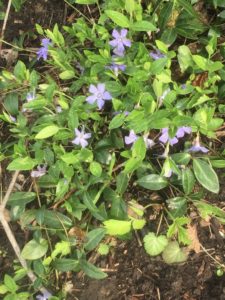
- Winter Creeper: it grows quickly and is hardy; you can walk on it.
- Jacobs’ Ladder and wild ginger for shady areas.
- Prairie Forbs for sunny areas.
- Pachysandra for shady areas.
- Purple Leaf Winter Creeper for sunny, partial shade areas.
- Sweet Woodruff: it’s delicate and smells good in the spring.
Professional plant people and seasoned gardeners are aware of the infinite possibilities, while novices like me may not know the difference between dahlia and daisy. However, generous garden mavens surround us.
Members of a garden club know how to make flowers flourish without a lot of fuss and they’re willing to share their ideas. “You don’t have to be a landscaper or an artist to paint with flowers and vegetables,” says Peg Olsen, a member of several garden clubs. Her garden is non-stop beautiful. “There are rules of thumb that anyone at a garden center can explain but the real creativity is left up to you,” she says. “There is no right answer. You get to choose the type of landscape you wish to create. If it doesn’t work, just pull it up and try something else.” I like her approach.
Nursery sales staff and landscapers are happy to answer questions and help solve dilemmas. They give excellent advice on how to design a garden or how to care for plants. Information about various resources is also easy to find on the Internet.
Never stop learning
“Without knowledge, people can destroy landscapes in a few hours,” says Mike SanFilippo who owns a landscape company. Pulling up ground cover because it is mistaken for a weed or trimming bushes and trees at the wrong time will cause damage. He is not a big fan of sprinkler systems. Research shows that deep, infrequent watering is better for plants than light, frequent watering. Fungus growth can occur if plants are over watered.
Heather works at a nursery. She says my questions are some of the most often ones she gets. “What’s new? What varieties do you recommend? In wet or dry areas? Sun or shade?” Her most important suggestion for do-it-yourselfers is: “Prep the soil properly. We have lots of clay in the area, so you need compost. Also, add supplements to the soil.”
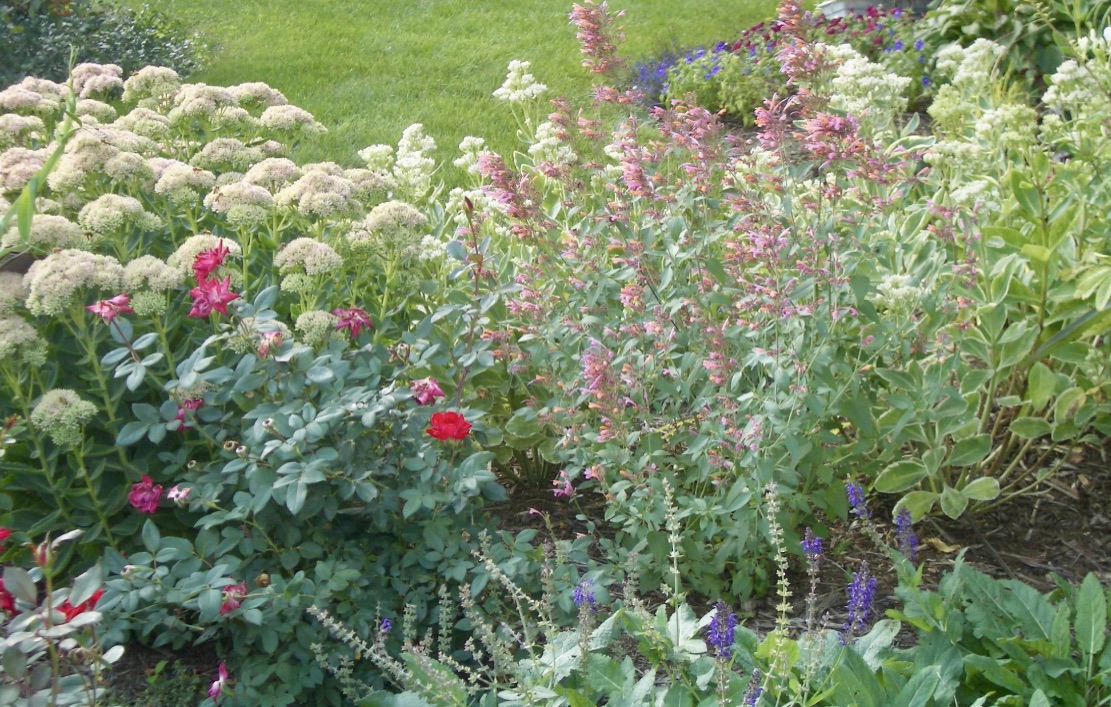
If I want color without having to plant annuals, Heather recommends Endless Summer Hydrangea and Knock-Out Roses. They have a long bloom time. She says there are colorful plants for shade areas, too. For example, the Pinky Winky Hydrangea with 14-inch blooms grows in shade. She also recommends succulents such as Sedum for dry areas. For multiple-season interest Cranesbill blooms in spring and then shows red orange leaves in fall.
Discover your own preferences
Within my community, I spot beautiful residential gardens both simple and grand. In them I notice a few favorite standbys – the striking bloom of the Knock-Out Rose remains until frost and requires no pruning. Calamagrostis, or “Karl Foerster” is a drought-tolerant, deer-resistant upright grass that grows five feet tall and produces a golden plume during winter. Salvia are deer-resistant, drought-tolerant re-bloomers that make colorful borders for a perennial bed. Understated, but sturdy is the evergreen boxwood shrub.
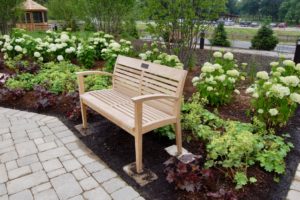
Public gardens are good sources for ideas too. You can oberve drought-tolerant, easily maintained plants including Shasta Daisies, Endless Summer Hydrangeas, May Night Salvia, Sedum ground cover, Karl Foerster grass, Dwarf Fountain grass, Sedum Autumn Joy, Gold Flame Spirea, Cone Flowers, and Daylilies. Annual flowers are often tucked-in for color.
Wandering through local nature preserves with a volunteer provides a lesson on what’s native to the area. Little Blue Stem and Porcupine grass are strong growers. With a pair of binoculars, I can spot plants without traipsing over them. I bring a camera to capture wildflowers blooming in abundance. If I can’t grow them at least I can look at them.
Plan before you plant
Where should I put my garden? What windows do I look out most often? How will it look from the patio? Should I try to hide that tree stump out back? Or enhance the front door? There’s always the mowing question: Is it easy to mow around? Answering these questions can be the start of a plan.
Lots of people like me give up on gardening because they believe it’s too much work. But what I’ve learned is that if I prepare the soil properly and plant the right variety in a good location most of the work is done. Fear of failure won’t stop me. I can just pull it out of the ground and try again with something different.
Expect challenges
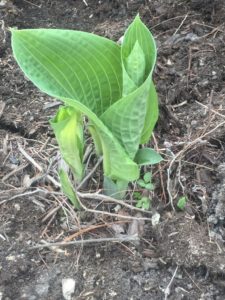 A landscaper friend says all gardeners struggle with inconsistent weather. “Last year’s rain damaged a lot of plants,” he says. “The root systems were under water and topsoil washed away.” Drought, deer that graze on flowers and shrubs, and warm days in winter can fool plants into thinking, it’s time!
A landscaper friend says all gardeners struggle with inconsistent weather. “Last year’s rain damaged a lot of plants,” he says. “The root systems were under water and topsoil washed away.” Drought, deer that graze on flowers and shrubs, and warm days in winter can fool plants into thinking, it’s time!
So why garden at all? Surveys show that people garden for personal satisfaction. And for utilitarian reasons such as harvesting vegetables, flowers, or herbs, as well as for health benefits. My gardener friends agree. “It’s the best mental health care you can get,” says Meredith. “It makes me feel better digging in the dirt.” After having knee surgery, she knelt on one knee while planting 600 native plants in her yard.
Dennis sees gardening as a form of expression. “Everyone wants to create some form of beauty.” Peg’s garden inspires her. “The unexpected arrays of colors, textures, aromas, tastes and sounds spring forth with a promise I enjoy after a long winter.”
A favorite garden saying is: To plant a garden is to believe in tomorrow. “So true,” says Meredith. She decided to plant oak trees. “I won’t see them mature, but someone else will.”
I decide not to buy the purple spiky plant I have longed for. Instead I continue to admire it in other peoples’ yards. Like my daffodils, it lets me know that spring has finally arrived. This year, I’m going to plant something with a longer bloom time in that forgotten garden outside my bedroom window. Every morning it will remind me of not only what is good, but what is good enough.
***
What I Learned: Quick Tips for a Low Maintenance Garden
Every garden location is different. And every gardener is unique. If you’re looking for exact instructions, you may get frustrated. Be patient. Governed by very few rules, most gardens are pleasantly unpredictable. Here are my take-aways for creating a low maintenance garden.
Set goals. Goals will keep you focused. For example: Are you looking for a nice view or to cover an unsightly spot? Is it a private garden or for public display?
If you’re looking for a long bloom time purchase plants with that characteristic. When properly situated, Blue Wonder and May Night will bloom from May to October.
Determine how much time you want to spend in the garden. Limit your ambitions or delegate any chores that exceed that limit to a landscape maintenance service, a teenager, or a supportive spouse.
Decide on an appropriate location. This should be a place that you like and is easy to get to. Match plants to the location’s conditions and your preferences. Watch the sunlight in your yard throughout the day.
Fill unplanted areas with gravel, brick, or a deck.
Prepare the soil by adding compost and loosen the dirt. In the long run this saves time. If you don’t want to do this yourself, hire someone.
Buy only a few varieties of hardy perennials. Keep it simple by planting in quantity. Masses of plants reduce weed growth.
For long-lived plants that practically grow themselves choose Daylilies, Geraniums, Peonies, and Hosta. Other hardy perennials that need very little division or deadheading and can withstand summer heat are ornamental grasses, Fringed Bleeding Heart, Echinacea, Lady’s Mantle, Sedum, Coreopsis (tickseed), and Yarrow.
Plant perennials in prepared soil no deeper than the container they came in.
Mulch. It limits weed growth and holds moisture. A two- to three-inch mulch layer is recommended for most plants. Bark, pine needles, and shredded leaves are common organic mulches that decompose over time and add nutrients and organic matter to the soil. Apply the mulch after plants are well established and the soil is reasonably moist.
If you’d rather not mulch, a non-invasive ground cover is another effective and attractive way to keep the weeds out.
Watering. Gardens should receive one inch of water per week during the growing season. If it doesn’t rain, water the garden or supply irrigation with drip hoses. Put a one-inch deep can outside to measure rainfall.
To decorate a patio or deck. Grace outdoor tables with potted succulent plants that won’t wilt in the dry, hot days of summer.
Decorate a window with a flower box. Use large containers with a polymer crystals mix to keep soil moist. Or, bring the box to a local garden center and have them plant it for you.
Keep a sense of humor. Need I say more?
Take time to sit in a shady spot and admire your creation!
